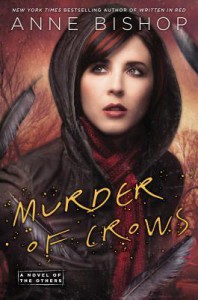Murder by Death
I read cozy and historical mysteries, a bit of Paranormal/UF, and to mix it up, I read science and gardening books on occasion.
Murder of Crows (A Novel of the Others, #2)

Thank god that's over! Let me explain:
This weekend in Melbourne we had an Indian Summer. (For those of you not familiar with the American term: Indian Summer: a period of unusually dry, warm weather occurring in late autumn.) I know this only in the vaguest sense because honestly, I couldn't freaking put the book down long enough to look outside. Laundry didn't get done. DH was resoundingly ignored. Luckily he cooks or we'd have both gone without eating. I'm not exactly sure what I did eat, come to think of it - he put a plate in front of me and I ate whatever was on it. I do remember chewing... I'm sure it was delicious...
Thankfully books like this only come around a couple of times a year. The compulsive need to keep reading is, I think, something that's best enjoyed in small doses.
Murder of Crows was just as good as Written in Red. Tess and the Elementals are still my favourites, and I still enjoyed the swift and devastating justice that is consistently delivered by the Others. That sounds blood-thirsty doesn't it? But the world Ms. Bishop has created is a very black and white world in terms of morality. The Others control all the land, all the resources, and where humans are allowed to live and how much of any resource can be used. Clear cut rules exist for other/human interaction, (although the Others prefer no interaction at all). Following the rules brings peace, or at least detente. Breaking the rules means death. No warnings, just death.
Meg is what happens when you introduce gray to this black and white world. Human, but not prey, she doesn't judge and treats everyone, Other or Human, with kindness. This book starts to explore just what kind of changes are possible when one person/other, and then another, and another choose shades of gray.
The immediate plot of Murder of Crows is the continuation and resolution of one started in Written in Red as well as The Controller's ongoing campaign to bring Meg back to his facility. Instead of a slow build up leading to a final climax, this book is a series of smaller climaxes each bringing the story closer to an end. While I'd rather not wait for the third book, at least the story ended with at least as much satisfaction as anticipation.
 8
8
 5
5



